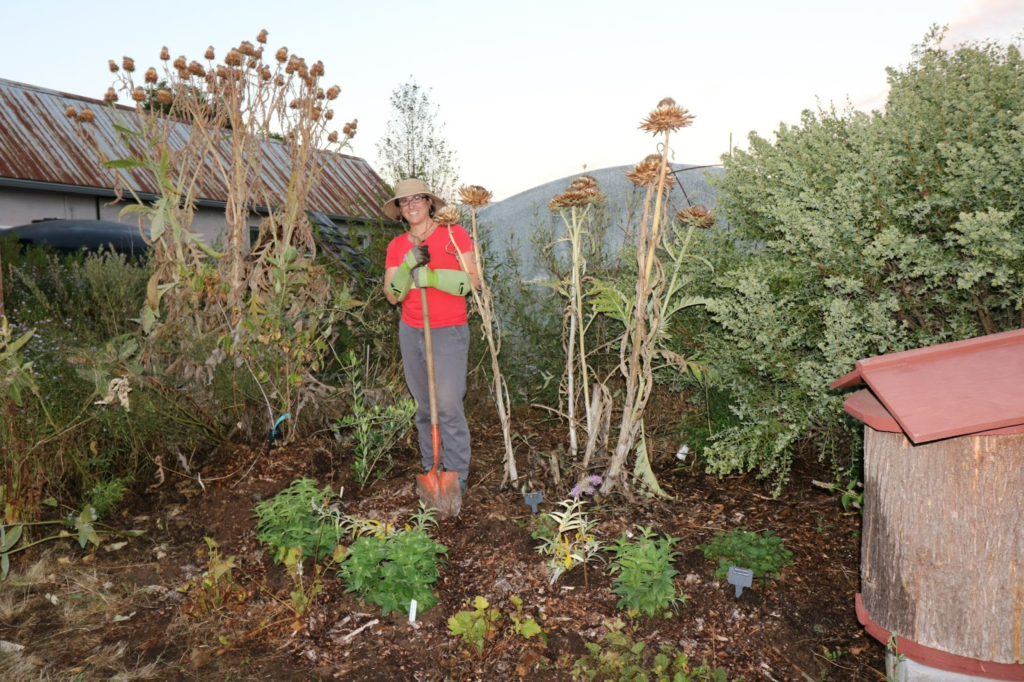Summer Retrospective Part 2
By Sarah Bronstein, Master Gardener

Oak Creek Center for Urban Horticulture (OCCUH) is a learning laboratory for sustainable horticultural practices in both rural and peri-urban landscapes. The 6.5 acres on the SW corner of the campus house are used for formal and informal OSU research, riparian restoration, a student CSA program, as well as just plain fun.
Last summer, OCCUH invited the OSU Extension Master Gardener (MG) trainees to work on a pilot project renovating and planting beds on the grounds. Kathleen Dennis, the on-site project lead, guided the MG volunteers. Together, the group:
- Weeded, mulched, and added native wildflowers to an upland prairie area
- Renovated a high-profile woody hedgerow, and
- Planted a small hummingbird garden.

The Southern Hedgerow is a long high profile bed near the parking area for the Bee Lab at OCCUH. The bed is anchored with native woody perennials such as California Lilac (Ceanothus thyrsiflorus) and Oregon Grape (Mahonia aquifolium), as well as show-stopper ornamentals including columnar apples, cardoon (Cynara cardunculus) and coyote bush (Baccharis pilularis). As is often the case in the Willamette Valley’s verdant summers, when the MG work began in August, weeds had encroached in some areas, and plants had grown into one another. The purpose of the Master Gardener Pilot Project in this bed was to weed, thin, and prune the bed to highlight the existing plantings. Empty spaces were planted with ornamentals, many of which were selected to attract pollinating insects and hummingbirds.


Renovating the Hedgerow proved to be rewarding work. As the weeds were pulled away and spent stalks of Cardoon and Milkweed were removed, Master Gardener Trainee Sarah Bronstein revealed forgotten plants, and made space for new plantings. In some cases, the bed held both pleasant and unpleasant surprises. A rare Heptacodium miconoides was revealed among a thick stand of Douglas aster, that had shielded it from summer rays.
Bronstein had the benefit of utilizing OCCUH’s plant stock, including red and blue ornamental sages (Salvia elegans), variegated butterfly bushes (Buddleia davidii), and an olive tree. A wildflower mix and wild strawberries were tucked in between other plants to help cover the ground and prevent future weed invasions.
In the coming year human, insect, and avian visitors to Oak Creek will be welcomed by the silvery hues of Cardoon, Coyote Bush, and Milkweed in the Southern Hedgerow, accented by the bright colors of purple Buddleia flowers and ornamental sage.
OCCUH’s mission is to utilize open expanses in a more coherent urban-based fashion. Urban Meadows, Green Roofs, pollinator space, and urban wildlife habitats are all on the drawing board. The Center is always looking for volunteers to help with projects.

